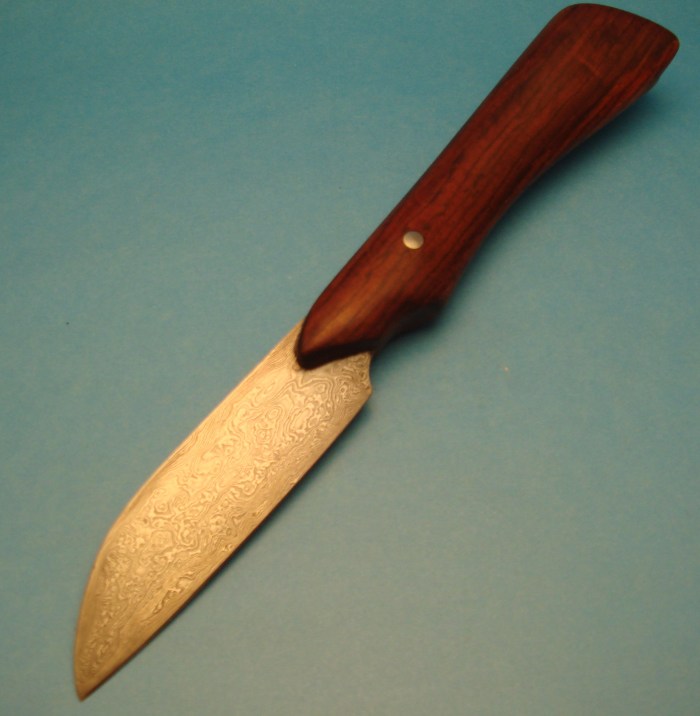
The knife above was forged from 180 layer teardrop/raindrop damascus composed of 1095C and 15n20 steel. It has a hidden tang construction with one stainless pin and a cocobolo handle.
In this case, I produced the tear drop billet first and then made the knife. In terms of making the knife, it was the same process as any other hidden tang knife; grab a bar of steel, forge to shape, grind to thickness and finish, heat treat, etch and add handle. (It all sounds SO easy like that!)
To make the teardrop, I forge welded a billet to 180 layers, about the size and thickness of a chocolate bar. I then annealed the bar, and drilled a wack of holes into the bar of various sizes and with random placement. In general I was mostly using a 1/4 inch drill bit. The bar was about 1 inch thick, and I never drilled more than 3/8 inch into the bar. After all the drilling was done, I went back over each of the holes and champhored the edges with larger size bits. Basically, you don't want any straight 'holes'. Steep walls will make a small teardrop while more gradual walls will make a larger teardrop. Once all that is done, bring the billet back to forgewelding heat and forge the surface back to flat and draw the bar out to the length/width that you are looking for. Drawing the bar out lengthwise only will elongate your teardrops.
When you make your blade, it's best to forge the blade to shape and thickness. The teardrops are at the surface of your billet, so excessive grinding has the potential to remove them entirely. In the case of my blade above, it looks more like pools and eddies and not discrete 'teardrops' - although it is clear that the pattern disappears as the grind moves toward the edge.